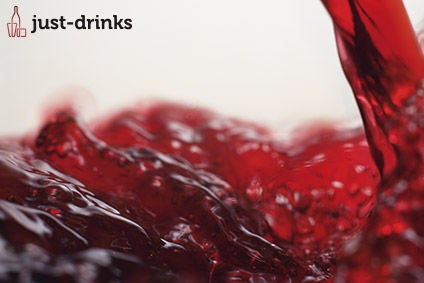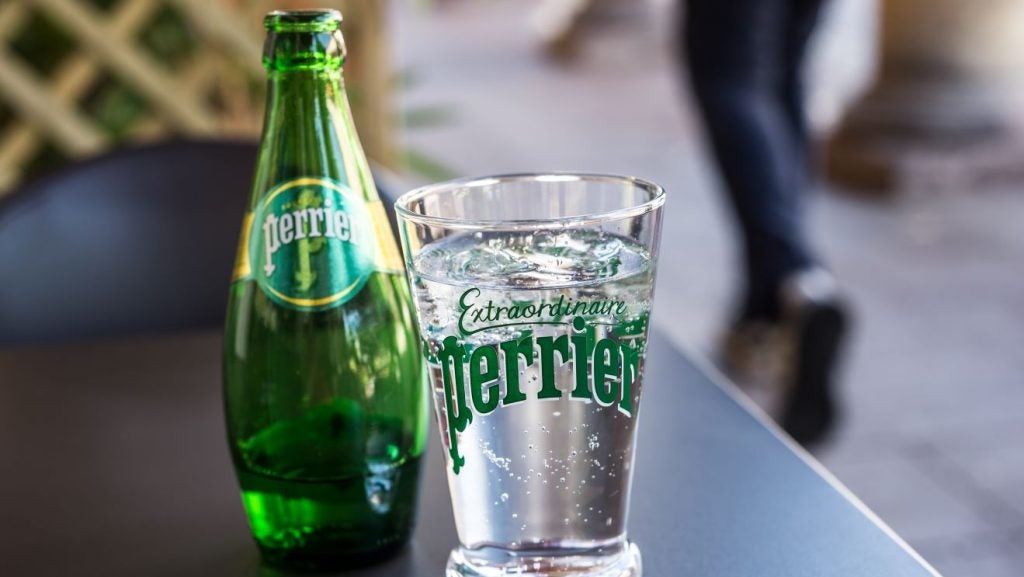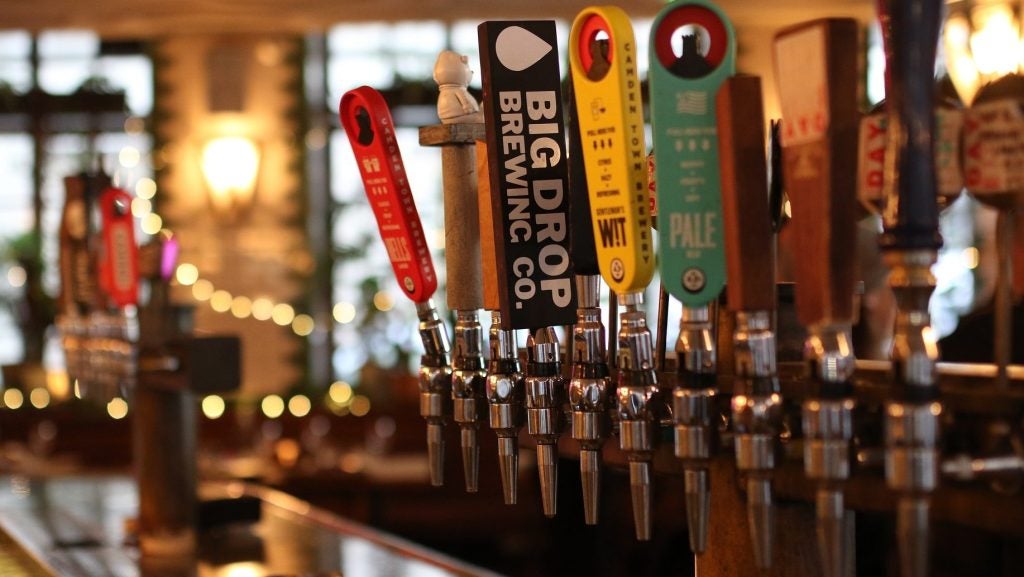
As the end of the year approaches, just-drinks looks back at the stories that made the headlines in 2016 across the global drinks industry. Here, category commentator Ben Cooper picks out the highs and the lows for the wine category.
Sales of Champagne have always tended to be something of an economic bellwether, so news in December that sales growth for Prosecco had outstripped Champagne across Europe in the year to the end of September may have been greeted ominously by many. According to IRI, Prosecco sales grew by 24% in value and by 23% in volume over the 12 months to while Champagne grew 0.9% in value and dropped 0.3% in volume during the same period. In the same month, leading Champagne producer Laurent Perrier reported single-digit falls in both sales and profits for the first six months of its fiscal year, with chairman Stephane Dalyac conceding that the company was battling a “difficult market environment”.
Fizzing sales
Prosecco’s European advance was driven by strong growth in the UK, where by contrast Champagne prices have fallen by 7% since the country’s vote to leave the EU. just-drinks reported in March that the value of US Champagne exports had topped those in the UK for the first time in 16 years, on the back of increasing demand from American consumers for prestige cuvees.
If the use of the Charmat tank fermentation method to give Prosecco its bubbles offends some purists, it is hard to imagine what they would make of assertions by UK wine supplier Kingsland Drinks in May. Speaking to just-drinks at the London Wine Trade Fair, Kingsland marketing controller Jo Taylorson said most consumers “don’t actually care” how bubbles are added to their sparkling wine.
“The wine industry often believes people know more about [how wine is made] than they do,” Taylorson said. “People don’t mind how it’s carbonated”. In April, Kingsland launched two sparkling wines, Shorn Pinot Grigio and Live White Zinfandel, the first to come from a new carbonation bottling line at its Manchester plant. Both are existing brands in Kingsland’s portfolio that have been through the new carbonation process, which simply adds bubbles to still wine. Taylorson said fears that consumers might be put off by the carbonation process had been allayed by their pre-launch research for the launches.
How well do you really know your competitors?
Access the most comprehensive Company Profiles on the market, powered by GlobalData. Save hours of research. Gain competitive edge.

Thank you!
Your download email will arrive shortly
Not ready to buy yet? Download a free sample
We are confident about the unique quality of our Company Profiles. However, we want you to make the most beneficial decision for your business, so we offer a free sample that you can download by submitting the below form
By GlobalDataSee Also:
Underlining that Champagne retains the premium high ground, though, IRI put Champagne’s value sales for Europe as a whole for the year to September at EUR1.4bn, against EUR789m for Prosecco, in spite of the latter’s far greater volumes. In the UK, Prosecco annual sales are now EUR600m compared to EUR333m for Champagne.
The news for the EU wine sector overall appeared positive this year, with the Comité Européen des Entreprises Vins (CEEV) reporting in March that EU wine exports reached a record high in 2015. CEEV said exports in the year were up 8.9% to EUR9.8bn (US$10.69bn), with volumes rising by 3% to 21.9m hectolitres.
China still rising
Of particular note in 2016 was the continued growth for wine in China. EU exports to the country were up 26% in value and 29% in volumes, reaching their highest ever level in both volume and value terms. China is now one of the EU’s top five export markets, along with the US, Switzerland, Canada and Japan.
There was further confirmation of China’s increasing importance as a wine market in October, when the country overtook the US as the leading export market for Australian wine, while in the same month the association representing Bordeaux wine producers, the Conseil Interprofessionnel du Vin de Bordeaux (CIVB), reported a 22% increase in shipments to China for the 12 months to the end of June. The strong growth in China was described by CIVB president Allan Sichel as “the stand-out feature of the year”, while persistent declines in Bordeaux’s principal markets in Europe were “cause for concern”. Bordeaux wine exports to the UK, Belgium and Germany declined by 6%, 8% and 34% respectively for the same period.
What is most encouraging for wine exporters is that China’s growth is being spurred by increasing demand for wine among the expanding middle class. As a report from Wine Intelligence noted in July, increasing disposable income and the growth of e-commerce have made imported wine more affordable and accessible. There are now 48m urban upper-middle-class imported-wine drinkers, up from 38m in 2014, according to the China Landscapes report. Some 35% of consumers surveyed for the report stated that they drink imported wine on a weekly basis, compared with 23% the year before.
In September, just-drinks wine columnist Chris Losh also pointed to China’s huge potential as a wine producer. “Everyone knows that China is a huge market for selling wine,” Losh wrote. “In the very near future, we will have to start viewing it as a globally-relevant producer as well.”
Asia Pacific’s increasing interest
The growing interest in wine in the Asia Pacific region was further underlined by the news in October that the UK’s Wine & Spirit Education Trust (WSET) had opened its first international office in Hong Kong, as it looked to meet increasing demand in the region for education courses. WSET began offering courses in China as far back as 2006, and China has now overtaken the US as its second largest market after the UK. The country is also the WSET’s fastest growing market, with candidate numbers for 2015/16 increasing by 38%, compared with growth in the UK of 14%. “There is a new wave of younger Millennials in China, and across Asia, who are interested in wine and spirits, so we are stepping in to further enhance the service we provide to support our providers in the region, as well as businesses who will benefit from wine and spirit education and qualifications,” said WSET chief executive Ian Harris.
There were also signs of promise from India, as Moët Hennessy officially opened a winery in Dindori, Maharashtra, producing its Chandon sparkling wine brand, in April. The group’s first production site in the country, the Dindori winery has actually been operational since 2014. However, Davide Marcovitch, who heads up the Chandon business, said the April opening was “a significant moment” for Chandon, and reiterates our commitment to India”.
Another indication of the growth potential in the Indian market came in July, when Diageo-controlled United Spirits announced the launch of two new additions to its Four Seasons wine range. The Vintner’s Reserve Select Barrels Cabernet and Shiraz, which were rolled out to markets such as Bangalore, Pune, Mumbai, Kolkata, and Arunachal Pradesh & Andaman & Nicobar Island, were the first new wines to be added to the Four Seasons range since Diageo took control of United Spirits. The company said it also has a sparkling wine in the pipeline.
Like the Chandon operation, the Four Seasons winery is situated in Maharashtra, and produces wines under the Four Seasons brand for the Indian market and the Ritu brand for export markets. Elsewhere, however, Diageo continued its divestment from the wine business, following the announcement by CEO Ivan Menezes in 2015 that wine was no longer core to its business.
Diageo deserting wine
Indeed, the year began with Diageo completing the sale of the bulk of its wine assets, including the Blossom Hill and Piat d’Or brands, to Treasury Wine Estates (TWE) for US$552m. Shortly after, TWE replaced Diageo as the US importer for the Provence rosé producer Château Minuty. In February, Diageo sold its remaining California wine businesses, first announcing the sale of the Acacia winery and vineyard in Napa to Peju Province Winery for an undisclosed fee. The sale of Chalone Estate vineyards and Gavilan to Foley Family Wines a few days later marked Diageo’s exit from the US wine sector.
In fact, 2016 was a busy year for wine in terms of M&A activity. In December, Pernod Ricard reached an agreement to sell its Domecq brandies and wines to Bodega Las Copas, a joint-venture between Grupo Emperador Spain and Gonzalez Byass. Unlike Diageo, Pernod has remained committed to running substantial wine operations alongside its spirits business.
However, Diageo was not the only large drinks firm in 2016 to be divesting from the wine sector. In November, Gruppo Campari sold its Italian wine assets, Sella & Mosca and Teruzzi & Puthod, to wine distributor Terra Moretti for EUR62m (US$65.4m). The divestment marked the company’s exit from the Italian still wine sector, in line with the group’s previously-announced intention to dispose of “non-core” activities and focus on its spirits business.
Also in November, Australian brewer Lion, owned by Japan’s Kirin Holdings, announced the sale of its Australian premium wine business, Fine Wine Partners (FWP), to Accolade Wines, for an undisclosed fee. Lion said it was unable to “prioritise the investment” needed to grow FWP as it looked to focus on the beer and cider category.
The previous month, Constellation Brands sold its Canadian wine unit, which includes brands such as Jackson-Triggs and Inniskillin, to Ontario Teachers’ Pension Plan for CAD1.03bn (US$761m). At the same time, Constellation announced it would buy five “super and ultra-premium” wine brands from Washington winery Charles Smith. Constellation’s acquisition strategy is to target high-margin brands across all alcohol categories. Earlier in the month, CEO Rob Sands CEO had told analysts his company was in a position to “attack anything”.
One distinction between wine and spirits that multinationals have often highlighted as a persuasive argument for preferring to put their money elsewhere was wine’s far greater exposure to the vagaries of the weather. That reason not only prevails today but is expected to be exacerbated as climate change makes erratic weather events increasingly common. How climate change will fundamentally alter the global landscape was discussed by Chris Losh in June as he reported from the Cool Climate Wine Symposium being held in Brighton on the UK’s south coast. The idea that the Cool Climate Wine Symposium of 2100 might be coming from Oslo, Losh suggested, is “probably no more ridiculous than suggesting 30 years ago that it would be held in the UK”.
Brand focus
Numerous developments during 2016 rendered the notion that intrinsic marketing differences between wine and spirits make them difficult to combine in a portfolio as being outdated. Nevertheless, it is interesting to note that the same debate around the marketing of wine is going on in France today as was being conducted 25 years ago when the New World boom transformed the global wine market.
In June, Laurent Delaunay, head of wine producer Badet Clément, said France still lags behind the rest of the world in creating global wine brands. Delaunay told just-drinks that few of the top wine brands in the world are French and that, as a result, the country has lost market share to New World regions. He added that the country needs “a total change of mind” and to drop its “high-handed, Grand Cru” approach, which focuses more on the style of production than the consumer. “We have missed the train,” Delaunay said. “In the past 15 years, the New World has taken all of our market because they have launched some brands, and adapted their styles to consumer expectation, whereas in France we haven’t done that.”
Adding plenty of grist to Delaunay’s mill, 2016 saw a multitude of examples of innovative marketing suggesting the wine world as a whole is very different today from even ten or 15 years ago.
Innovative thinking
Earlier in the year, a Wine Intelligence report pointed to the growth potential for lower-abv wines, long considered by purists to be anathema, across “multiple markets”. In May, Treasury announced plans to launch its Californian wine brand, Blossom Hill, in Australia, but said the Blossom Hill for the Australian market would be produced not in California, but domestically. “Many people simply want to enjoy their wine, not to debate it or be confused by it,” the company’s Australia MD Angus McPherson, said.
The online wine market is also expanding rapidly. In April, research from Wine Intelligence forecast online wine sales in the UK would grow over the next three years to reach 14% of the total market. During the same month, eBay unveiled a tie-up with mobile wine app Drync to expand its US online wine platform. The new retail portal, eBay Wine, allows consumers to buy and ship wine to 45 US states. Combined with Drync’s network of wine retail partners, eBay says it now sells in the region of 10,000 different wines from 30 countries and more than 500 regions. Rewind to January, and Aldi entered the online fray in the UK, with the launch of a GBP35m (US$50m) web platform.
A more diverse marketing mix
Social media is playing an increasingly important role in wine brand marketing at all levels of the market. Among the companies expanding its use of social media in 2016 was Moet Hennessy’s Krug Champagne, which announced in March plans to use Twitter in a bid to engage Krug Champagne drinkers through personalised tweets linked to Krug bottles.
In April, Yealands Wine Group launched a wine tour app allowing consumers to take a self-guided tour of its vineyards. Later in the year, Sogrape introduced a Mateus rosé app, which aims to show consumers how to serve the Portuguese rosé brand correctly.
Numerous new sponsorship deals linking wine brands with major sports franchises and global stars were also unveiled during the past year. Particularly notable among these was Pernod’s appointment in November of nine-time Olympic gold medalist Usain Bolt as “chief entertainment officer” for its GH Mumm Champagne house. A brace of wine brands also signed major deals with two English Premier League football clubs: In June, Chilean wine company Santa Rita agreed a three-year partnership with Arsenal to become the team’s first official wine partner. The previous month, Treasury announced a multi-year marketing tie-up with Manchester City, which will see Wolf Blass become the club’s official wine partner in Asia, the Middle East, Africa and Mexico.
This latter tie-up underlines both the importance of high-level sponsorships in the marketing mix of major wine brands and the growing importance of Asian markets. As the year began, Wolf Blass launched a sponsorship deal with the National Basketball Association in China, having secured partnerships with professional baseball organisations in Japan and Korea.
Elsewhere in sport, Moet Hennessy extended and expanded Veuve Clicquot’s sponsorship deal with F1 team Ferrari in March, with Accolade announcing in the same month that its New Zealand wine brand, Mud House, would sponsor the 2017 British & Irish Lions rugby tour of New Zealand. Then, in October, Accolade unveiled an expanded sponsorship deal between Hardys and the England cricket team.
The Tour de France remains an attractive sponsorship vehicle for wines, with Distell unveiling a sponsorship deal with Team Dimension Data Qhubeka for its Nederburg brand in January. However, the continued sponsorship of the Tour by Concha y Toro’s Chilean wine brand, Cono Sur, attracted controversy, as wine growers in the south-west of France threatened to blockade this year’s tour in protest.
This spat will not have been lost on those asserting the French wine sector has fallen behind the times when it comes to wine marketing. “It is unacceptable that the Tour de France’s organisers be allowed to advertise a Chilean wine,” said farmers’ union Jeunes Agriculteurs. “Everyone knows the difficulties the (French) agricultural sector is facing at the moment. The Tour de France must support French products through its partnerships not foreign ones.”
Accolade’s future with a different leader
just-drinks started the year with a fascinating interview with Accolade CEO Paul Schaafsma. A wine industry lifer, Schaafsma had plenty to say about the past, present and future for both the category and for Accolade. His forecasts fo the company, however, didn’t quite stretch to what happened, as the year unfolded. Over the Summer, speculation mounted on what owner CHAMP had in mind for Accolade and, when the group was lined up in August for a stock market debut next year, the future looked set. That is, until two weeks later, when Schaafsma’s pending departure was announced. There weren’t many that saw that coming.
Next year, then, will be of note for how Accolade plays out in the plc domain under new CEO Michael East.
Bring on 2017.





